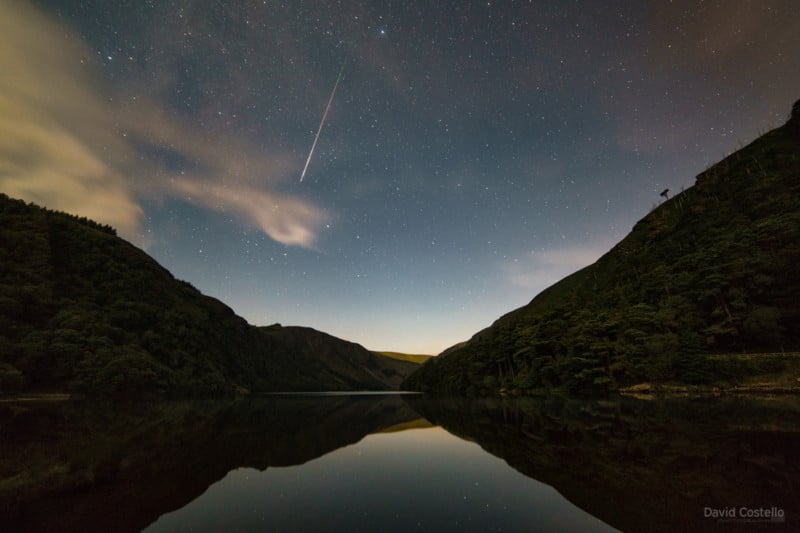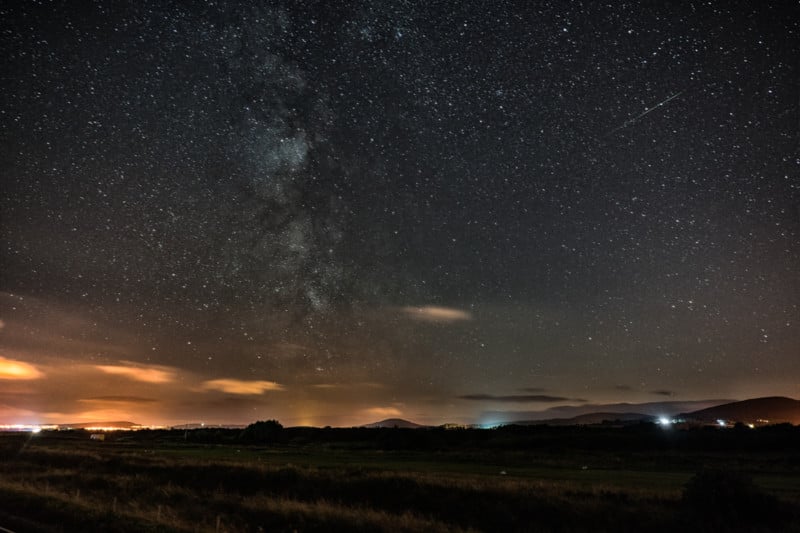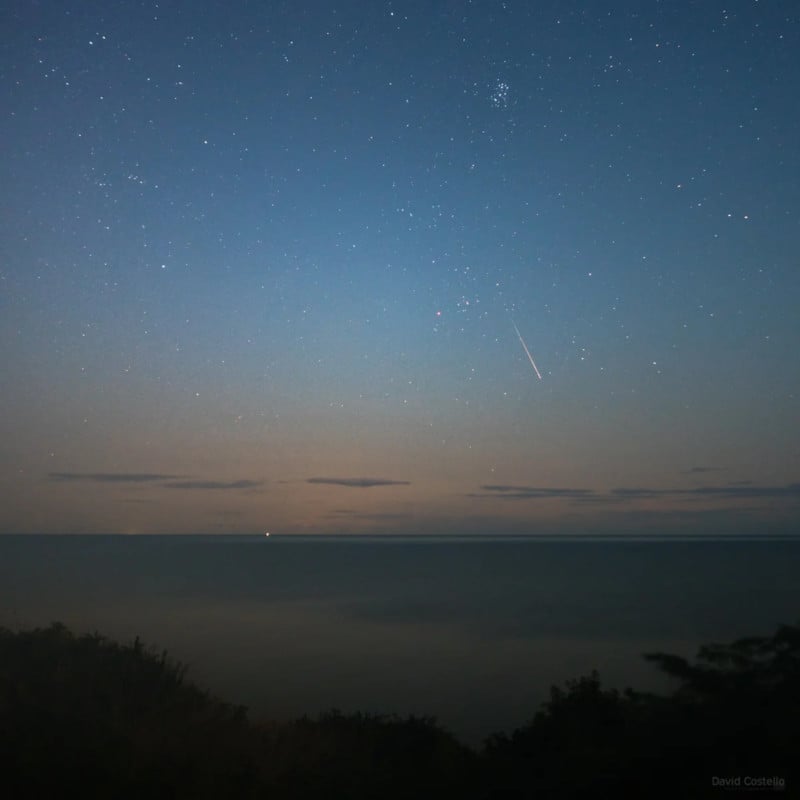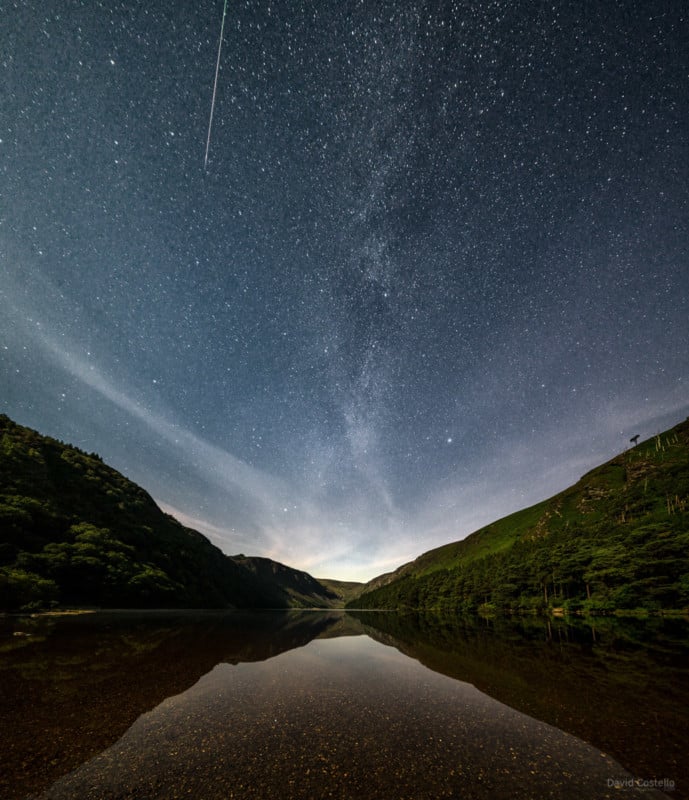Helpful Tips to Watch and Photograph the 2021 Perseid Meteor Shower
![]()
The Perseid Meteor Shower is one of my favorite times of the year, there is nothing like getting out of the city on a summer night to watch a star-filled sky as the bright Perseids streak across in vivid colors.
Editor’s note: This article is written by a photographer who is based in Ireland, and the tips below are written from that perspective. That said, most of the information is relevant to all photographers located in the northern hemisphere.
The peak of the meteor shower is on the morning of August 13 from midnight till before dawn in Ireland, at the peak the rate of “shooting stars” can be up to 100 per hour, and thankfully this year the moon will set in the Dublin area at 22:47GMT on August 12, so there will be no lunar glare to hamper the show. Viewing the night before and the night after is highly recommended too. As the earth moves into the dust trail of comet Swift-Tuttle the meteors can be seen from late July until late August, but the rates are fewer in the ensuing days past the 13th.
Below I have added some viewing tips for the shower and some links to help you along the way.

Viewing Tips for the Perseid Meteor Shower
- Move as far from city lights and light pollution as possible.
- Check the cloud forecast in the area you are planning to view from.
- Dress in warm comfortable clothes, the clear summer nights are chilly!
- Bring a sun lounger or blanket to sit on.
- Bring a flask and some snacks.
Light Pollution
It goes without saying that light pollution is one of the worst enemies for viewing the night sky, during a meteor shower only the brightest meteors can be seen from the city and the further you move away from bright lights will enhance your viewing experience. The West Coast of Ireland is an ideal location with the Kerry International Dark Sky Reserve and many parts of westerly Galway and Mayo being perfect locations for viewing. If a trip out West isn’t on the agenda there are many places within an hour of Dublin that the meteor viewing will be vastly improved. Try to find an open location with good clearance all around you, and preferably a view of the horizon to the East.
Here is a link to a Light Pollution Map I use to help you find darker sky locations close to your area.
Clouds
Checking the cloud forecast is the most important aspect of dark sky viewing, it is the reason I always have two or three locations set out a few days beforehand. Clouds are one of the hardest weather aspects to predict, especially in Ireland! My personal format has always been to check the forecast 96 hours out to get an idea, then twice daily up until the day I plan to view. I won’t go into the many weather charts I look over but I have added two links below to help along your way nearer the time of the shower.
The first is Met Eireann and it is very easy to check the updated forecast on your chosen location.
For a real-time cloud update on the day I’m planning to view the Perseids, I use Sat 24. It is also good after sunset if there is a chance of some cloud as it has an infrared setting.

Clothes
It really does get quite chilly for some people on a clear summer night, and warm comfortable clothes might not feel needed if it’s 18 degrees Celcius in Dublin at 9 PM, but it is a very different feeling at 2 AM in a valley in Wicklow or on the coast in Kerry. I usually wear a few layers that can be removed and added as needed. Check the weather in your region and plan accordingly.
Seating
Looking up at the sky for so long does put a strain on your neck, and a sun lounger or blanket in an open space is perfect to lay back and watch the Perseid Meteor Shower. Remember the Perseids originate from the North East sky as Perseus rises around midnight, but they can be seen all across the sky and before midnight you can be lucky enough to catch an “Earthgrazer” while the radiant if the shower is close to the horizon.
Drinks and Snacks
In between taking photos, there is nothing I like more than a starlight picnic! And a flask with a warm drink is perfect to keep the summer night chill away while enjoying the show.

If you have a red light, bring it along, as the red light doesn’t hamper your night vision when you’re looking in your hamper for goodies! When you have settled in your eyes will start adapting to the dark, to let your eyes become fully dark-adapted usually takes about 15 to 30 minutes, looking at your phone or bright lights during this time will set you back. Apart from the Perseids, there is a wonderful view of the Milky Way during the night.

Also Visible in the Night Sky this Summer in Ireland
The Milky Way core is visible right now if you’re lucky enough to be out of city lights and it lasts until October in the Irish night sky. Use the same advice as above for the best viewing experience.
The Buck Moon (or Thunder Moon and Hay Moon) reaches full phase on Friday, July 23.
The Delta Aquariid Meteor Shower peaks on July 29th, and while the meteors are not at the rate of the Perseids, it is still an enjoyable summer watch and has a wide date range. Viewing is directed towards the south, near the horizon.
About the author: David Costello is a professional landscape photographer and videographer based in Dublin, Ireland with a keen interest in meteorology, a love of astronomy, and a passion for blending vintage equipment with digital tech. You can see more of David’s work on his website. This article was also published here.
Image credits: Header photo licensed via Depositphotos.